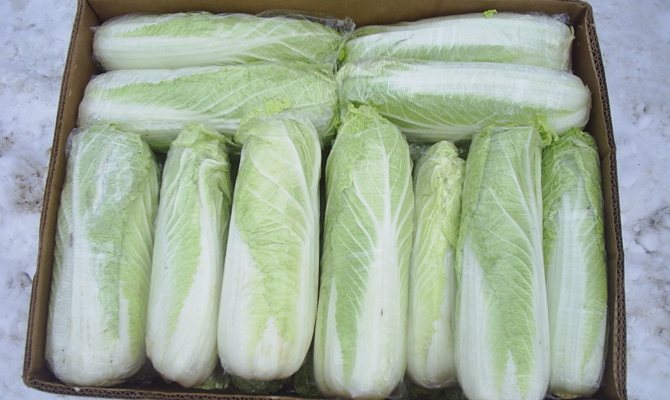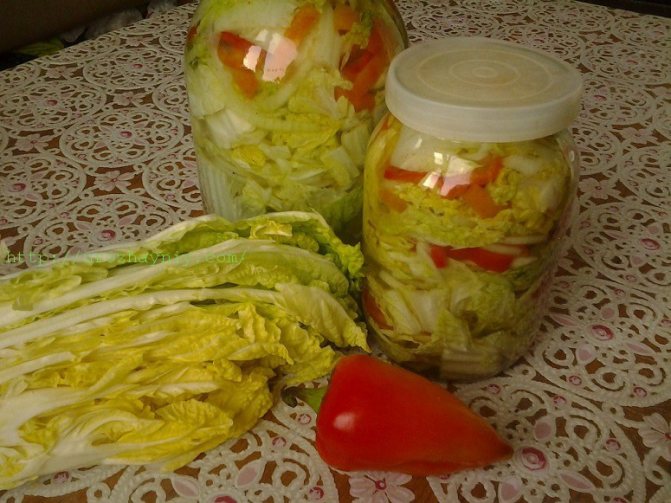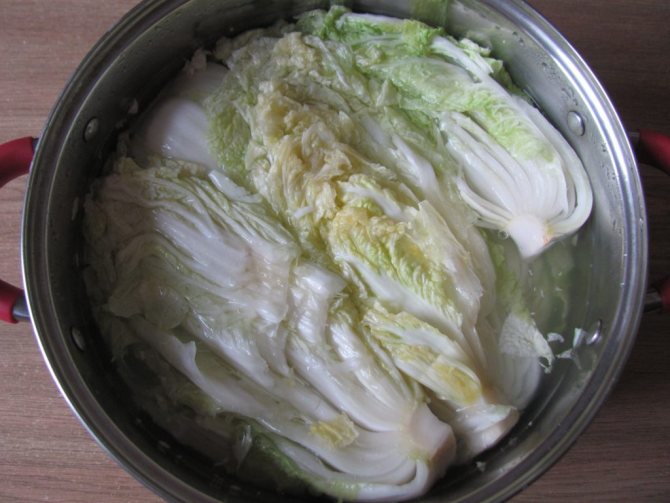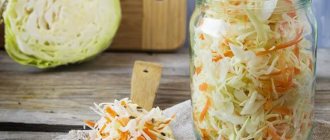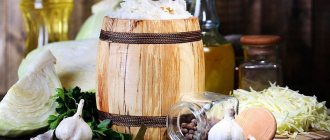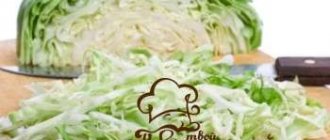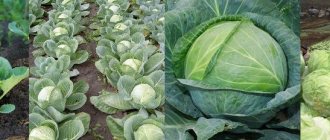Peking cabbage is considered one of the favorites among the vegetables that need to be prepared for the winter. The vegetable is stored by itself for quite a long time. Moreover, its main advantage over other species is that it does not lose vitamins, useful elements. Of course, hardly anyone wants to eat it fresh. To do this, we propose to consider recipes for the preparation of Peking cabbage for the winter.
Before proceeding to canning, it is necessary to prepare the main ingredient: remove the stump leg under the very base, clean out the dirty places and remove the withered leaves. Rinse thoroughly. Cabbage forks are not so dense, so insects can be found in the leaves. Do not be intimidated, they can be removed quickly and easily. To do this, pour salted, cool water into a spacious bowl or basin. Dip the vegetable into it and leave it that way for a quarter of an hour. After the time has elapsed, the cabbage is thoroughly rinsed.
Features of Chinese cabbage
Chinese cabbage contains acids, vitamins, minerals and fiber. By salting, you can preserve the beneficial properties of this vegetable for a long time.

"Peking" strengthens the immune system, saves from vitamin deficiency, helps to cleanse the body and normalize metabolism. It is included in the diet in the fight against excess weight, with diseases of the nervous system and heart, hormonal disorders. The calorie content of such a snack is 15 kcal per 0.1 kg of product.
To cook Chinese cabbage, you need to observe some nuances:
- when cooking vegetables are not subjected to long-term processing;
- it takes a long time for salting, from several days to one month;
- it is not recommended to serve the snack with dairy products, so as not to cause an upset stomach.
Simple option
Korean dishes are distinguished by their exquisite taste and bright spices. For this reason, salads are spicy and savory. Korean Chinese cabbage recipe is quick and easy, suitable for home cooking. Perfectly stored in a cold place until the onset of cold weather.
- cabbage - 1.5 kg;
- rock salt - 45 g;
- filtered water - 1.5 l;
- chili pepper - 60 g;
- garlic - 13 cloves.
- Peel and prepare the Chinese cabbage. Chop into large slices. Pour clean liquid into a saucepan, add canning salt, bring to a boil. Cook until completely dissolved.
- Pour cabbage with hot brine, cover and leave on the kitchen table for a day. Let the contents cool completely.
- Free the garlic cloves from the husk, chop into thin rings. Peel the hot pepper from the stalk and seeds, cut into strips. Put in a small glass jar and add 2 tablespoons of clean water.
- Drain the resulting juice and brine from the cabbage. Grease the slices with a garlic-pepper mixture. Put under the press for 2 days, removing in a cold place. After the time has elapsed, spread the spicy salad in jars, roll up.
Peking cabbage pickling recipes
For salting, you will need Chinese cabbage and other vegetables (hot or sweet peppers, pears, etc.). Salt and spices are always used. For a spicier snack, add ginger or chili.
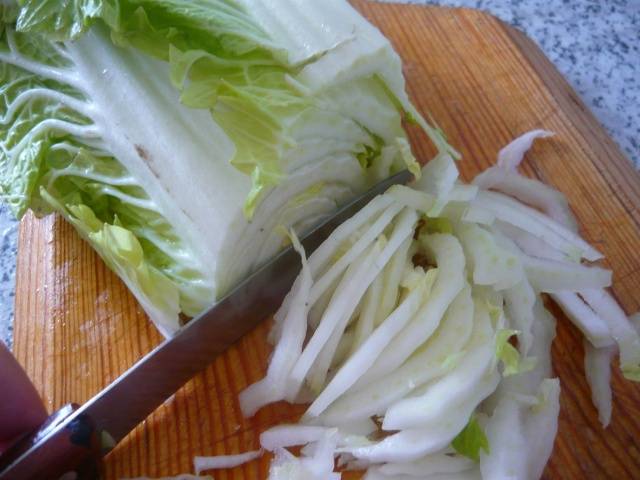

A simple recipe
For the simplest salting method, you only need cabbage and salt. The cooking process in this case includes the following steps:
- Several heads of Peking cabbage with a total weight of 10 kg are cut in any convenient way. If a large container is used for salting, then it is enough to cut them into four parts. When using cans, you need to chop it into strips.
- Sliced vegetables are placed in a saucepan or jar in layers, between which salt is poured. The specified amount of cabbage will require 0.7 kg of salt.
- Then boiled water is poured so that the vegetables are completely underneath.
- Cover the vegetables with gauze and put oppression on top. The container remains in a cool place so that the cabbage does not sour.
- The gauze is changed every few days. After 3 weeks, the vegetables will be salted, then they can be transferred to jars.
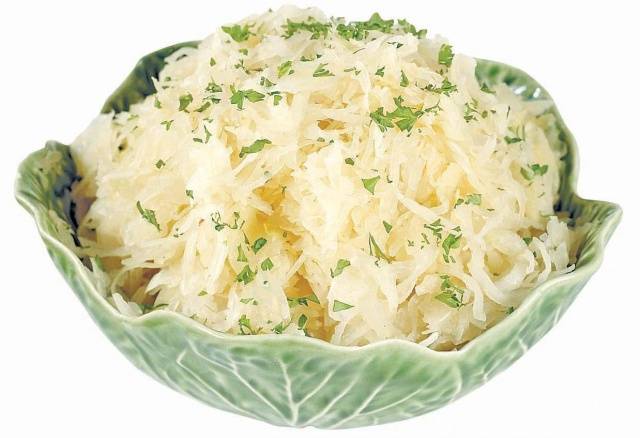

Salting for the winter
For salting Peking cabbage for the winter, in addition to the main ingredients, you will need spices. The recipe is very simple and consists of the following steps:
- Cabbage (1 kg) is finely chopped.
- Salt (0.1 kg), bay leaves and cloves (2 pcs.) And allspice (4 pcs.) Are added to the chopped vegetables.
- The vegetable mass is mixed and tamped into a glass jar.
- On top of the vegetables are covered with a piece of cloth or gauze, after which a load is placed in the form of a small stone or a bottle of water.
- The jar is removed to a dark place where the temperature is kept low.
- After a month, the snack can be added to your diet.
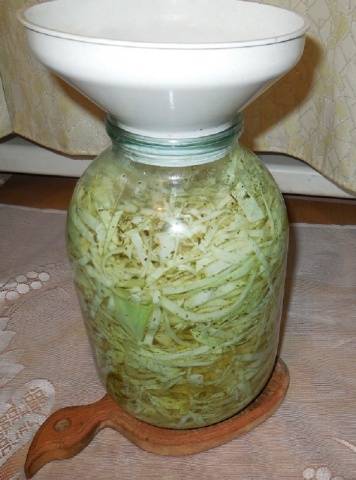

Pickled with pear
Cabbage goes well with fruit. If you add a pear when salting, then you can get tasty and healthy blanks. The recipe requires green pears that are not ripe enough. Otherwise, the pieces of fruit will fall apart during the cooking process.
- Cabbage (1 pc.) Is cut into strips. The procedure is performed with a knife or grater.
- Pears (2 pcs.) Are cut, seeds are removed and finely chopped.
- Mix vegetables and remove a little by hand. Add 4 tbsp to the resulting mass. l. salt.
- Then the vegetables are placed in a saucepan or jar, where 0.2 l of water is added.
- The container is placed in the refrigerator overnight.
- In the morning, the resulting brine is poured into a separate jar.
- Grated ginger root (no more than 3 cm), chopped garlic (3 cloves) and red ground pepper (2 pinches) are added to the vegetable mass.
- Vegetables are poured with the brine obtained earlier. Now the workpieces are left for 3 days in a warm place.
- After the fermentation process is complete, pickled cabbage is rolled up in jars and stored.
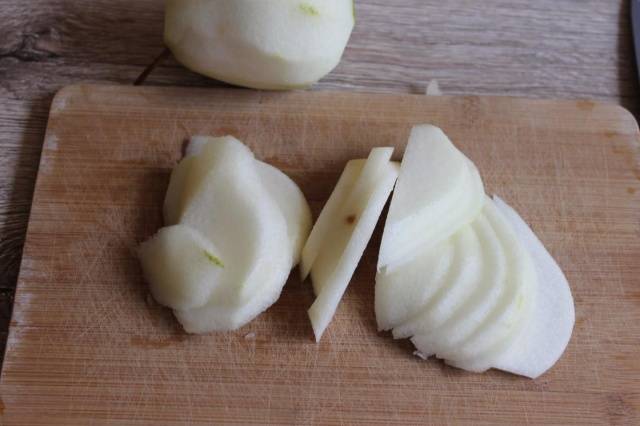

Korean salting
In the national Korean cuisine, there is a method of salting Peking cabbage using hot spices. This appetizer is an addition to side dishes, and is also used for colds.
The following recipe will help to salt Chinese cabbage for the winter in Korean:
- "Peking" with a total weight of 1 kg should be divided into 4 parts.
- A saucepan is placed on the stove, where 2 liters of water and 6 tbsp. l. salt. The liquid is brought to a boil.
- Vegetables must be completely filled with marinade and placed in a warm place.
- Chopped chili peppers (4 tablespoons) are mixed with garlic (7 cloves), which is preliminarily passed through a garlic press. The components are mixed with the addition of water so that the mixture acquires the consistency of sour cream. The mass is left in the refrigerator for a day.
- The brine is drained from the cabbage and each leaf is smeared with a mixture of pepper and garlic. Ready vegetables are placed in a warm place for 2 days. You need to put a load on top of the vegetables.
- Ready pickles are removed in a cool place.
History
The vegetable crop is a subspecies of turnip, and the herb is often referred to as Chinese salad or lettuce. Peking cabbage is known by other names as petsai and Chinese cabbage.
In the countries of East Asia, the popular Chamcha dish is prepared from such cabbage, during the preparation of which the salad is salted, pickled and, according to the traditional Korean recipe, fermented.
As a result of pickling with hot red pepper, ginger and garlic in Chinese cabbage, the fermentation process takes place and the world famous spicy snack Kimchi (Kim-chi) is obtained. From the preparation of Peking cabbage for the winter, this tasty and healthy food, stored for future use, will tastefully complement meat chops, baked meat in the winter menu and will contribute to the rapid digestion of fatty foods eaten at dinner.
Step by step recipe
Rinse the Peking cabbage, cut the stump into 4 even parts, divide the head of cabbage into 4 equal parts along these cuts. Warm up 2 cups of water and dissolve 2 tbsp salt in them. l. Pour the brine into the rest of the water. Put the cabbage in a saucepan and pour over the brine. It should cover the vegetable completely. Leave to salt for a day, periodically changing pieces of cabbage in places (lower to upper) for even salting. During this time, the cabbage leaves should become flexible. If the sheet is folded in half, it should not break.
Freezing
One of the easiest options for preserving vegetables at home and the quickest ways to harvest Peking cabbage for the winter is freezing. How to freeze Chinese cabbage? You can freeze fresh cabbage, and it is especially beneficial to prepare it in the fall, while vegetables are sold at an affordable price.
The method of freezing depends on the intended dish for which you decided to freeze the cabbage. What can you make with frozen Chinese cabbage?
Frozen cabbage is not suitable for making fresh salads. But from whole frozen leaves in winter, you can quickly cook homemade cabbage rolls, make a vegetable casserole.
If you freeze cabbage in pieces for the winter, then you can cook delicious borsch, Korean soup from the blank, stew, fry or cook real Korean kimchi.
How to freeze:
- Peking cabbage should be cleaned of dirty leaves and finely chopped. Place tightly in plastic bags (most conveniently with fasteners) and send to the freezer for quick freezing. In winter, the workpiece must be removed from the bag and, without defrosting, start cooking.
- For harvesting with leaves, forks, you must disassemble into separate leaves, soften the cabbage in the microwave, or hold it in boiling water for a few seconds. Cut off the white thickened part from the sheet, dry with a napkin. After that, the prepared sheets must be packed in bags or plastic containers intended for freezing and placed in the freezer.
KIM-CHI or KOREAN SURVEILLED PEEKING CABBAGE
Another of the dishes I learned from the Sakhalin Koreans. Koreans harvest such cabbage in the same way as Russians ferment cabbage - in barrels, for future use, in late autumn. Now, of course, during the development of all kinds of technologies, the need for barrels has disappeared, wonderful refrigerators have appeared, specially invented for storing kim chi. Yes, and the cabbage itself began to be sold all year round, it became possible not to cook, as before, tens, and even hundreds of kilograms (when I lived on Sakhalin, I prepared up to 150 kg of cabbage for the winter). In Korean cuisine, such cabbage is eaten both by itself - simply chopped, or added to various dishes - when cooking pork, in dumplings, manti, pian se, cabbage rolls, minced meat for various dishes, and even in soups.
For a variety of taste, when preparing kim chi, daikon radish can be added to it, shifting layers between cabbage, red fish, white cabbage. Also, according to this recipe, you can cook separately white cabbage. It is also very tasty, only in comparison with kim chi from Peking cabbage, white cabbage turns out to be more crunchy. As a rule, kim chi is eaten with more bland foods: boiled unleavened rice, broth, boiled meat, noodles. The recipe is designed for a small amount of kim chi yield, with the expectation of "taste".If you like it, then all the norms can be increased by a multiple of the increase in the cabbage harvested next time. Yes, and to be honest, it is not so much the ratio of products that is important (each housewife makes it to her taste, depending on the love of spicy food in the family), but the technology of cooking and storage itself.
Necessary products: - Chinese cabbage (about 2.5-3 kg) - garlic (3 large heads) - salt (0.25-0.3 kg) - red hot pepper, coarsely ground (in flakes, sold by weight, by volume - equal to the volume of garlic).
Preparation: The most important thing is to choose the right Chinese cabbage. It should not be completely white, but not very green either; choose thicker cabbages - such cabbage will be juicier and tastier. We remove the damaged leaves from the heads, cut off the edges of the stumps. You don't need to wash the cabbage. Cut lengthwise into four parts (in half, then each part in half more). If the heads of cabbage are not large, then it is enough to cut only into halves.
Opening each part with a fan, rub the cabbage with salt. To ensure that the salt covers each leaf evenly, the cabbage can be dipped in water and allowed to drain.
We put the salted cabbage tightly, but without tamping, into the selected container (basin, large container, saucepan, you cannot use aluminum dishes - it is oxidized). In this form, we leave the cabbage to be salted in the warmth for about a day.
After a day (it is possible in one and a half to two days, nothing terrible will happen if the cabbage is slightly salted), wash the cabbage from the remaining salt and fill it with cold water for about a couple of hours so that the excess salt goes away (if you salted the cabbage for longer than a day, then you need to soak it a little longer, you can even leave it in this form overnight).
After soaking, drain the water, leave the cabbage in a colander or on a wire rack so that all the water is glass. 20 minutes is quite enough.
While the cabbage is soaking and draining, you can start making garlic-pepper paste. This is where rubber gloves will come in handy (you can use household gloves, maybe medical ones, they don't matter, the main thing is to protect your hands from pepper and garlic, otherwise you will return beauty to them for at least a week, and you will not immediately get rid of the smell of garlic). Peel the garlic, pass it through a press.
Add to the garlic in an equal volume red, coarsely ground flakes, hot pepper.
Mix well. By the way, Koreans also prepare such a paste for future use and store it in the refrigerator. It is very convenient if you often cook Korean salads.
When the cabbage is glass, we take the final touch. Each part of the cabbage, as in the case of salting, we open with a fan and evenly rub it with cooked garlic-pepper paste, each leaf, again hiding his hands in rubber gloves - so they will be more whole, prettier and the smell of garlic will not discourage the desire of your loved one to kiss her on occasion: ).
Selection and preparation of ingredients
It is good if the vegetable grows in its own garden, and there is no doubt about its quality. When buying cabbage, you need to pay attention to the following points:
- Preferably purchase cabbage without packaging... This makes it easier to see. If the head of cabbage is placed in cling film and condensation is noticed inside the package, then this product is stale and begins to deteriorate.
- Sheets must be dry... If there are small drops of water on them, which is added additionally to refresh the product, then the taste of the product is partially lost.
- There should be no signs of decay on the leaves., small brownish spots.
- It is better to stop your choice on heads of cabbage of medium density, small size... For preparations for the winter, I will go up to larger specimens, the main thing is that they are fresh and juicy. Yellow cabbage with large leaves will clearly be overripe and not juicy;
- This vegetable has no smell... If a specific smell comes from the product, then it was grown with the use of chemicals or processed before shipment.
- There are different types of Peking cabbage, so the color of the heads of cabbage can be from yellowish to green. It is not the color of the vegetable that should be taken into account, but the saturation of the shade..


Peking cabbage must be prepared for further processing (freezing, pickling, salting, canning).
The preparation process itself takes place in the following sequence:
- examine the head of cabbage, remove the yellowed leaves, cut off the base of the stem;
- wash thoroughly with cool water;
- hold in warm salted water for 20 minutes - to get rid of insects;
- rinse again under cool tap water.
Now cabbage can be pickled with vinegar, pickled or frozen. As for the other ingredients, chili powder can be substituted for red hot pepper pods.
Did you know? Peking cabbage is of Chinese origin. This vegetable has been cultivated in China for over 5000 years.
Is it possible to ferment Chinese cabbage
Harvesting this vegetable for the winter using sourdough is not only possible, but also quite easy. Sauerkraut vaguely resembles white cabbage in taste. Peking contains amino acids, fiber, vitamins of various groups and minerals.
As a result of the starter culture, all the useful elements that the Peking vegetable contains can be preserved. Peking perfectly strengthens the immune system, helps prevent vitamin deficiency, promotes the elimination of toxins and normalizes metabolic processes.
- This vegetable is recommended for:
- the fight against extra pounds;
- hormonal disorders;
- problems in the work of the nervous system;
- disorders of the heart.
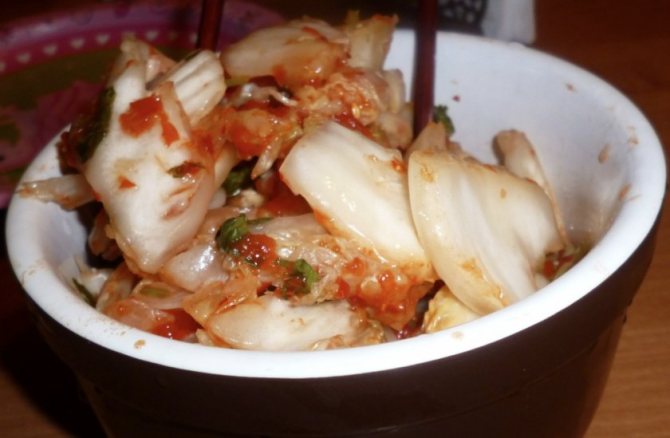

On average, a pickled vegetable has an energy value of 15 kcal per 100 g.
Home storage
In the fall, the harvest of vegetables harvested from the garden bed must be able to save. How to store Chinese cabbage at home for the winter? It is not difficult to save the harvested cabbage on time if you know how much it is stored.
Late and mid-late varieties of Peking Knyazhna, Vorozheya, Kudesnitsa are perfectly preserved fresh. But even with proper storage, fresh cabbage lasts a maximum of four months; a longer shelf life for the winter can be achieved by pickling, salting and freezing.
You can also store the sheets in a dried form. They are dried in the oven, at a low temperature, gradually, like apples. The preparation tastes like dried seaweed, which should be soaked before cooking.
For ease of preparation, the ingredients indicated in the recipes for the blanks in grams can be converted into tablespoons, teaspoons or milliliters.
Chamcha
The workpiece is bright, rich and tasty. It can be done with various vegetables, therefore, the recipe may differ slightly for each housewife. Consider another option, how to salt Beijing cabbage.
- Beijing cabbage - 2 kg;
- clean water - 3 l;
- table salt - 90 g;
- sweet peppers - 0.6 kg;
- chili - 70 g;
- garlic - 2 cloves;
- soy sauce - 20 ml;
- coriander - 10 g;
- ginger root - 20 g;
- ground black pepper - 10 g.
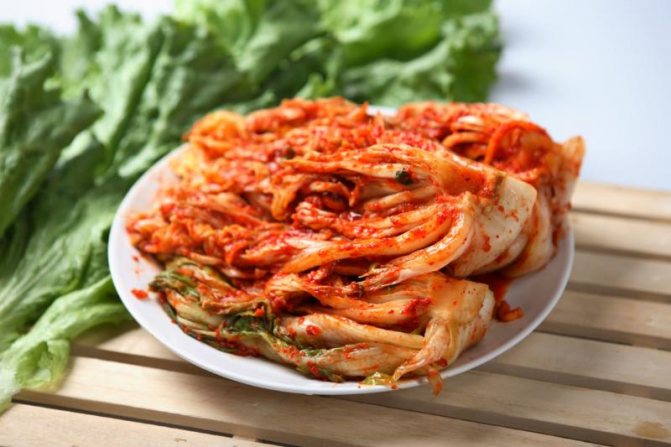

- Pour the liquid into a saucepan, boil and salt a little (2 tsp). Process the cabbage, rinse, chop into medium-sized strips. Put in hot water, cover, put under a press and put in a cool place until chilled. After cooling, remove the oppression, leave to ferment for 2 days.
- After the time has elapsed, squeeze the cabbage from the brine, and pour out the liquid.
- Peel the bell peppers, rinse and cut into strips. Arrange with cabbage. In a blender, combine the peeled chili, garlic, ginger root and other seasonings. Grind until puree.
- Combine all components by mixing thoroughly. Cover and leave on the table for a quarter of an hour.Arrange in sterile jars and put in a warm place until bubbles begin to appear in the containers. Then immediately put in the cold.

